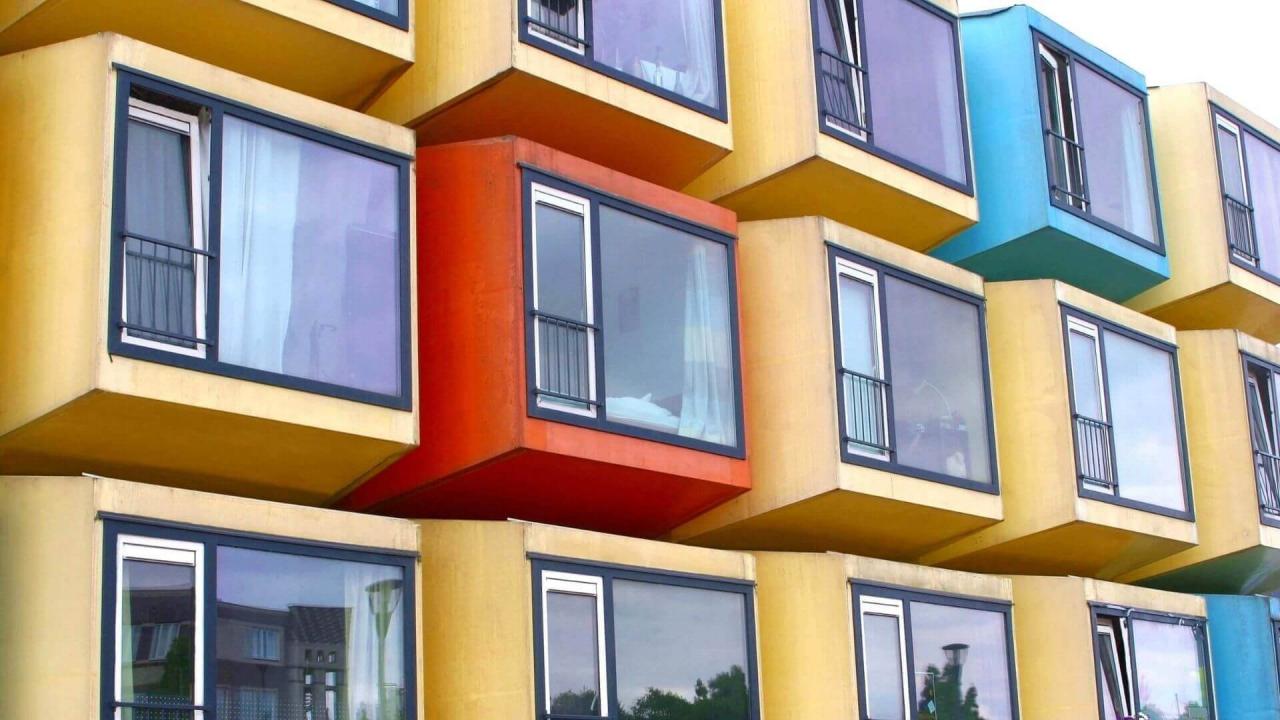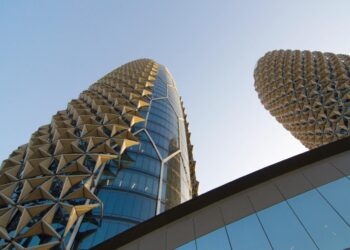The construction industry, a sector often seen as resistant to change, is undergoing a quiet but profound revolution. The traditional method of building on-site, a process that is often slow, expensive, and wasteful, is being challenged by a new and more efficient paradigm. Modular Architecture is a story of this shift, a movement that is fundamentally redefining how we design, build, and inhabit our structures. Modular architecture, or prefabrication, involves constructing building components in a controlled factory environment and then transporting them to a building site for assembly. This article will provide a comprehensive look into the world of modular architecture, exploring its core principles, the key drivers behind its explosive growth, and the strategic implications for architects, developers, and society. We will delve into critical areas such as its role in a more sustainable future, the new challenges of design and logistics, and the push for a new era of affordability and quality, offering a roadmap for navigating this transformative era.
The Foundational Principles of Modular Architecture

Modular architecture is a new way of thinking about construction. It’s a philosophy that is built on a foundation of a few key principles that make it a game-changer for the construction industry.
A. The Factory-Built Advantage: In the traditional construction model, a building is built on-site, where it is exposed to the elements, and the work is often a patchwork of different trades. A modular building, on the other hand, is built in a controlled factory environment.
- Precision and Quality: The controlled environment of a factory allows for a new level of precision and quality. The components are built with a high degree of accuracy, which can lead to a more durable and more energy-efficient building. The building is also less likely to have a defect or a construction flaw.
- Efficiency and Speed: The factory-built approach is also far more efficient and faster. The construction of the modules can happen in parallel with the site work, which can significantly reduce the overall project timeline. A modular building can be assembled on-site in a matter of days or weeks, not months or years.
B. The Principle of “Module” and Repetition: The concept of a “module” is at the heart of modular architecture. A module is a pre-built, three-dimensional component of a building, such as a room or a section of a floor.
- The “Lego-like” Approach: The construction of a modular building is a “Lego-like” approach, where a building is assembled from a collection of pre-built modules. This allows for a more standardized and more repeatable construction process.
- Scalability and Customization: While the modules are standardized, they can also be customized. A developer can, for example, choose from a variety of different floor plans, finishes, and features to create a building that is unique and that meets the needs of a specific client. This allows for a new level of scalability and customization.
C. The Integration of Technology: The modular architecture revolution is being powered by a new generation of technology.
- Building Information Modeling (BIM): Building Information Modeling (BIM) is a technology that allows a developer to create a 3D digital model of a building. This model can be used to plan the construction of the modules, to coordinate with the different trades, and to identify any potential problems before a single component is built.
- Robotics and Automation: The factory-built approach is also a perfect fit for robotics and automation. A robot can, for example, be used to weld the steel frame of a module, which can lead to a new level of precision and quality.
The New Drivers of Modular Architecture
The explosive growth of modular architecture is not a random phenomenon. It is a direct response to the demands of a new generation of clients, a push for sustainability, and a need for a new era of affordability.
A. The Push for Sustainability and a Circular Economy: The traditional construction industry is a massive source of waste and a major contributor to greenhouse gas emissions. Modular architecture is a direct response to this.
- Reduced Waste: A factory-built approach significantly reduces waste. The materials can be used more efficiently, and the waste that is generated can be recycled or reused. This is a game-changer for a company that is trying to be more sustainable.
- Energy Efficiency: A modular building can be more energy-efficient. The controlled environment of a factory allows for a more precise construction, which can lead to a more airtight and better-insulated building. This can significantly reduce a building’s energy consumption and its carbon footprint.
- A Circular Economy: Modular architecture is also a perfect fit for a “circular economy,” where a building is designed to be disassembled and its components are reused or recycled.
B. The Need for Speed and Efficiency: The traditional construction model is often slow, expensive, and prone to delays. The modular approach is a direct response to this.
- Faster Project Timelines: Modular architecture can significantly reduce a project’s timeline. The construction of the modules can happen in parallel with the site work, which can lead to a faster time to market for a developer.
- Reduced Labor Costs: A factory-built approach can also reduce labor costs. The work can be done by a smaller, more skilled team in a factory, and the on-site assembly can be done by a smaller, more specialized team.
C. A New Era of Affordability: The traditional construction model is often too expensive for a new generation of homebuyers.
- Reduced Cost: The efficiency and speed of a modular approach can lead to a significant reduction in a building’s cost. This is a game-changer for a developer who is trying to build a more affordable building.
- Mass Customization: The standardized but customizable nature of modular architecture also allows for a new level of affordability. A developer can, for example, build a series of affordable homes, and each one can be customized to the needs of a specific client.
D. The Resilience and Durability of Modular Buildings: A modular building is often more resilient and more durable than a traditional one.
- Structural Integrity: The modules are built in a controlled factory environment, which allows for a new level of structural integrity. The building is also often designed to withstand a more extreme weather event, such as a hurricane or an earthquake.
- The “Lego-like” Approach: The “Lego-like” approach of a modular building also makes it more durable. The modules are bolted together, which can lead to a stronger and more resilient structure.
The New Challenges of Modular Architecture

While modular architecture offers a host of benefits, it also introduces a new set of challenges that architects, developers, and policymakers must be prepared to address.
A. Design and Aesthetics: The traditional view of modular architecture is often associated with a uniform, “cookie-cutter” aesthetic.
- The “Creative” Challenge: The creative challenge is to use a standardized approach to create a building that is unique, aesthetically pleasing, and that meets the needs of a specific client.
- The New Era of Design: The new era of modular architecture is a new era of design, with a new generation of architects who are using technology and a new approach to design to create a building that is both beautiful and functional.
B. Logistics and Transportation: The logistics of a modular building are a new and complex beast.
- The “Module” Challenge: The transportation of a large, pre-built module to a building site is a significant logistical challenge. The modules can be a very large and very heavy, and they require a special truck and a special permit to transport them.
- The “Site” Challenge: The building site must also be ready for the modules. The foundation and the infrastructure must be in place before the modules are delivered.
C. Regulations and Building Codes: The building codes and regulations in many jurisdictions were not designed for a modular approach.
- The “Code” Challenge: The legal challenge is to get a modular building approved by a local building code official. The traditional building code is often a long and complex document, and it can be difficult to get a new and innovative approach approved.
- The New Era of Regulation: The new era of modular architecture is a new era of regulation, with a new push for building codes and regulations that are more flexible and more open to innovation.
D. The Talent and Expertise: The talent and expertise required to build a modular building are a new and specialized skill.
- The “Factory” Challenge: The factory-built approach requires a new generation of skilled workers who are trained in a new set of technologies and a new set of processes.
- The “Site” Challenge: The on-site assembly also requires a new generation of skilled workers who are trained in a new set of technologies and a new set of processes.
The Future of Modular Architecture
The future of modular architecture is not a static concept. It is a dynamic and evolving frontier that is being shaped by new technologies and a new understanding of our relationship with the built environment.
A. The Integration of AI and Robotics: The future of modular architecture will be defined by the integration of AI and robotics.
- AI for Design: AI can be used to automate the design of a modular building, with a new level of precision and efficiency.
- Robotics for Construction: A robot can be used to automate the construction of the modules, with a new level of speed and quality.
B. The “Cloud-like” Architecture: The future of modular architecture will be defined by a “cloud-like” approach, where a building is a collection of pre-built, customizable, and reusable modules.
- A Platform for Living: A building can be seen as a platform for living, and the modules can be seen as the applications that run on it.
- A New Era of Customization: This “cloud-like” approach can lead to a new era of mass customization, where a building can be customized to the needs of a specific client in a matter of minutes.
C. The Push for a Sustainable Future: The future of modular architecture is inextricably linked to a sustainable future.
- A Circular Economy: The push for a circular economy will be a major driver of modular architecture, as a building can be designed to be disassembled and its components can be reused or recycled.
- Energy Efficiency: The push for energy efficiency will also be a major driver of modular architecture, as a building can be designed to be more energy-efficient and to have a smaller carbon footprint.
D. The Role of the Public: The public has a powerful role to play in shaping the future of modular architecture.
- Consumer Demand: As consumers become more aware of the benefits of modular architecture, they will demand that their homes, offices, and public spaces be more sustainable, more affordable, and more resilient.
- Advocacy: Citizens can advocate for new laws and regulations that are more flexible and more open to innovation, which can help to accelerate the adoption of modular architecture.
Conclusion
Modular Architecture: Speed, Sustainability is more than just a new way of building; it’s a new social contract for the built environment. It is a recognition that our buildings are a major part of our impact on the planet, and that we have a responsibility to build them in a way that is more sustainable, more affordable, and more resilient. The challenges are immense, from the logistics of a pre-built module to the new era of design. However, the opportunity is even greater: to use the power of a new and innovative approach to building to create a world that is not just more beautiful, but also more sustainable, more affordable, and more in harmony with nature. The future of architecture and construction is here, and it is a new era of modular architecture.






Discussion about this post